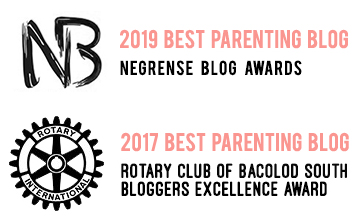The Brain Connection

Discover how the brain ticks and what you can do to fuel your child’s brainpower.
In his neuro-developmental research in the 1960s, American psycho-biologist and Nobel Prize winner Roger W. Sperry, Ph.D., discovered that the left and right hemispheres of the human brain operate on two different modes of thinking. The left side processes information logically, while the right side uses intuition. Dr. Sperry’s theory further suggests that every person functions with one mode stronger than the other.
Right Brain: The Synthesizer
According to Dr. Sperry’s findings, the right brain fosters creativity, intuition, and imagination. It handles messages that deal with shape, size, and patterns. The side of our brain helps us recreate the images we see so we can,, for example, remember directions to school and back home, which buildings or houses are on both sides of the street, and so on.
The right brain is also known as the holistic side. Right-brain people sort out information simultaneously, looking at the whole picture or the general concept first before focusing on specific details.
A right-brain child faced with a problem can come up with the proper solution based on gut feeling without any explanation as to how he arrived at it.
Left Brain: The Logic Master
The left side if the brain is considered the “thinking” or logical side. Left-brain people are believed to be more analytic. They process information sequentially, zeroing in on the details and absorbing each step before putting these details together to understand the whole picture.
A left-brain child would use the Scientific Method to solve a problem: he would first collect data and information, write the data down, and then proceed to solve the problem.
The left hemisphere is also the language center of the brain, sifting and sorting language information and processing language symbols as they are taken in by the senses. Our overall language faculties are not exclusive to the left hemisphere, however. According to child development specialist Feny Delos Angeles-Bautista, language learning, hearing, and memory entail the use of the temporal lobes, which are located on both sides of the brain.

Taking Sides
The following illustrates the main differences between left-brain and right-brain thinking.
Left Brain
- Verbal, focuses on words, symbols, numbers
- Analytic and logical
- Processes ideas sequentially
- Rational
- Uses words to remember things
- Tends to remember names more than faces
- Likes planning and making lists
- Likely to follow rules without any questions
- Objective
- Keeps track of time
- Keen observer
- Looks at parts
Right Brain
- Highly visual, focuses on images and patterns
- Random
- Intuitive or led by feelings
- Holistic
- Has photographic memory, uses images to remember things, writes things down or illustrates them
- Questions the existence of rules
- Subjective
- No sense of time
- May have trouble with spelling and finding words to express himself
- Looks at the whole scenario
Crossing Left To Right
Dr. Leticia P. Ho, clinical psychologist and neuro-therapist, explains that our brain is wired crosswise when it comes to movement and sensation (sense of touch). The right hemisphere collects and receives information from the left side of our body, while the left hemisphere collects and receives information from the right.
Each brain hemisphere holds specific functioning, though this does not necessarily mean that one side completely takes over all the time.
Both hemispheres receive the same messages; no brain activity relies on just one side. One hemisphere may take the lead in some activities, but it never works alone. A part of the brain called the corpus callosum serves as a “bridge”, sending cues and messages from one hemisphere to the other.
A child’s brain development begins as early as his days in the womb, and this “bridge” is said to become stronger when the child is born. In infancy, messages are sent equally to the two halves of the brain. If provided with enough stimulation during the first two years, each half begins to specialize and the link between the two is strengthened.
Creating A Balance
Most individuals are predisposed to employing one side of the brain more than the other. However, developing a “whole-brain” approach, or using both sides of the brain equally, isn’t improbable.
Majority of schools tend to nurture left-brain kids more, as academic subjects focus on logical thinking, analysis, and accuracy. Thus, for kids to be more “whole-brained”, schools should provide as much emphasis on the arts as they do on logic and scientific thinking. Learning activities that involve patterns, metaphors, analogies, role-playing, visual arts, and movement should be incorporated into reading, calculation, and scientific activities.
Remember, too, that the two hemispheres are not in competition with each other. No side is better or worse. Dr. Sperry’s theory simply posits two different modes of thinking and then presents ways to further enhance brain development using both modes.
Get your Childhood Psychology mfa degree and learn the complexities of the developing childhood brain.





